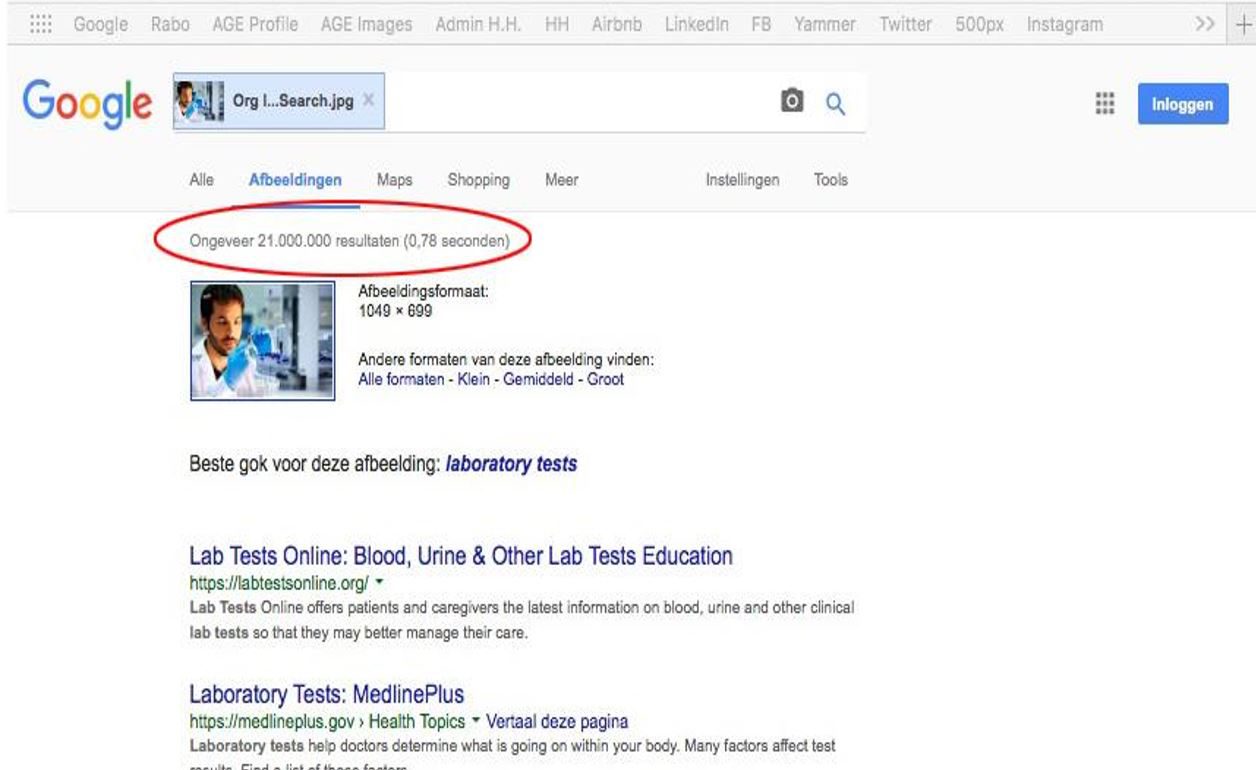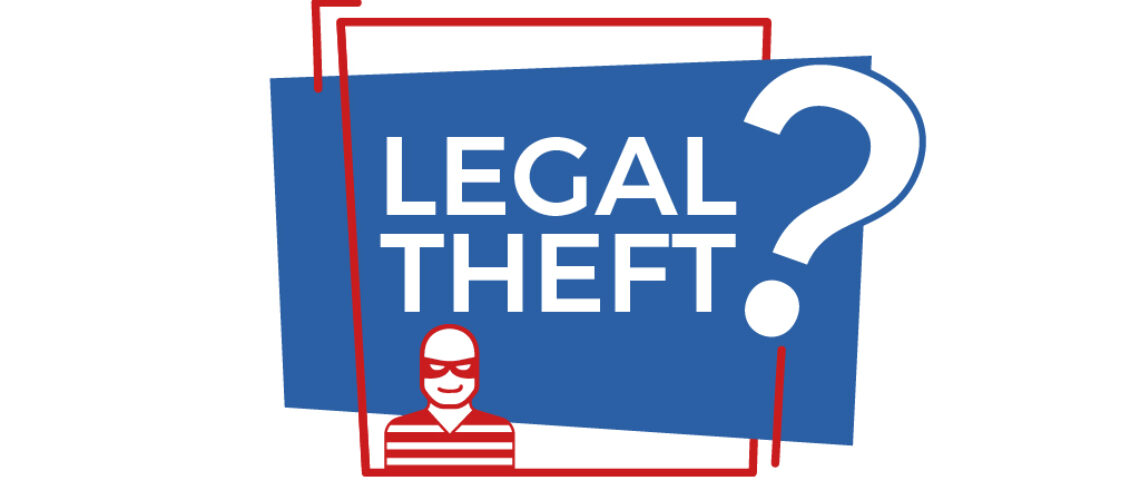Authors: Guido Koppes & Tatjana van der Krabben
Ever wondered how to use protected images without permission, without payment of royalties or even giving credit to the creator? The European Union allows you to do exactly that, provided you do so via embedding. Rightly, creators and content providers refuse to accept this legal loophole. However, they are not just dinosaurs failing to embrace progress, this is a major problem where legislation is lagging behind.
Embedding
Embedding, also referred to as inline linking, framing, and, typically when applied without permission, hotlinking, allows you to make content visible on multiple webpages via the original location. By means of a link to the original website of an image, but also text or video, can be shown on another website without affecting copyright.
The embedded content acts as an inserted window to the website where the content is hosted: the content appears to be part of a third party’s webpage, but is in fact retrieved and loaded via the original website where it is hosted. In 2014 the Court of Justice of the European Union has ruled that the embedding of protected content without permission constitutes no copyright infringement*.
* Rulings of the Court of Justice of the European Union:
Nils Svensson and Others v Retriever Sverige AB
BestWater International GmbH v Michael Mebes, Stefan Potsch
Embedding without permission is legal in the EU
Normally, when copyright applies, the creator is in control of what can and cannot be done with his work. The creator is the person who decides where his work is published and whether royalties need to be paid for the use of their work. The problem is that embedding is legal in the European Union, with or without permission. This has opened a door to legally using protected images without paying royalties. Whoever posts content online has no legal means to counteract hotlinking.
The technical details regarding the embedding of content greatly influence the legal side of it. Embedding acts like a link to the original content. To embed content, copying or downloading the content is not required. Embedding therefore does not create an illegal copy. The content is not published elsewhere: you are in fact viewing the original via a link. Strictly speaking, embedding only increases the visibility of the original. This circumstance has led to the conclusion that embedding is in accordance with copyright laws and is therefore allowed. Even without permission.
"This image can be found on 21,000,000 online pages, yet has only been purchased 4 times."
Why embedding without permission should not be legal
Embedded images are used in exactly the same way as purchased images. You may reason that the embedded content is not actually posted on another website, as brought forward in the above-mentioned case law, but it is visible elsewhere. And is so for a reason. The image is obviously not randomly selected and displayed, but is functional to the content in which it is embedded and as such adds value to it. The image is being used for profit, without permission or a mention, and without paying royalties. According to creators and stock photo agencies the impact of embedding protected images without permission is therefore no different than that of creating and publishing illegal copies of protected work.
By allowing the embedding of protected content a situation has been created that seems contrary to the whole point behind copyright laws; it limits the protection of creator rights. Embedding is a legal solution with illegal characteristics: it is the legal way to steal images.
Embedding and bandwidth theft
Embedding not only affects copyright issues. The embedded content is not multiplied, but is retrieved and loaded via the website where it is hosted. When retrieving and loading web content bandwidth is being used. Bandwidth use is not free and is also limited for most websites. When that limit is reached because of embedded content, the website owner literally has to pay the price for the additional bandwidth use, or the website may be taken offline. Embedding can lead to a situation where the creator actually has to pay for the unauthorised use of his works; a bizarre side effect of the European legislation with respect to embedded content.
The distinction between embedding with permission versus embedding without permission (hotlinking) is important. YouTube, for instance, consciously and explicitly offers the option of embedding content. YouTube is well aware that running heavy video files via your website or blog greatly affects the loading time of a webpage and the website’s bandwidth use. To make the sharing of video (with added paid ads) more appealing, their website is designed to support embedding and is able to process the bandwidth use that comes with that. The average website is but a dwarf compared to an online heavyweight like YouTube and will therefore reach the limits of its maximum bandwidth use far sooner.
Unauthorised use of images: no small matter
The unauthorised use of protected images is already out of control. Take for instance the example below: this image can be found on 21,000,000 online pages, yet has only been purchased 4 times.

There is no balance.
This case is not unique. Photographers, stock photo agencies: it happens to any creator or seller of images. A watermark offers little protection against hotlinking. Any watermark is rendered useless by shrinking the image to the point where it becomes virtually invisible. Now consider that a stock photo agency offers millions of images. The loss of turnover is huge.Of course that number of hits in this Google search result includes the official channels where this image is shown for promotional purposes, like stock photo agencies, but a few dozen functional hits is but a fraction of the total of available views for that photo.
Embedding is a stealthy phenomenon. It managed to stay under the radar for a long time, hidden among a lengthy list of hits when researching the online use of images. Because where does one begin assessing and addressing unauthorised use, when you find dozens or in some cases even millions of hits per image? Hard data regarding the occurrence of hotlinking are currently lacking. Yet now is the time to address the issue. The industry is already at the point where it cannot afford a further increase of unauthorised and unpaid use of protected images, but that is exactly what is about to happen.
The practice of embedding is increasing
Vincent van den Eijnde, director of the government run organization Pictoright that help author’s and visual creators with their rights for visual creators in the Netherlands, believes that hot-linking is still a latent problem: “People have not yet caught up with the legal facts. Once the word truly gets out, the damage will become really great, really fast.”
Van den Eijnde’s estimate seems realistic. Even without hard data it is a safe guess that high volume users of ‘free images’, such as bloggers, mostly still pick images with a Creative Commons license and illegal downloads, depending on the level of knowledge of and respect for copyright laws. When you do an online search for royalty-free or free images, you still primarily find information about the public domain and copyright laws. The moment online searches of that type start yielding information about embedding content in the top results, the practice of hot-linking is expected to really take off.
Hot linking is not new, but knowledge of it used to be limited to a relatively small group of people with more in-depth knowledge of html, mostly web builders. Through the publicity surrounding the above-mentioned case law, knowledge regarding hot-linking is spreading little by little, together with the realization that it is legal in the European Union. The fact that hot-linking offers legal access to an infinitely larger pool of images than otherwise available for free use obviously is a great incentive to resort to embedding: this is a growth scenario in the making. And anyone can do it: step-by-step instructions on embedding in html are easily found online.
"The aspect of investment in the creation of photos and images is often overlooked or trivialised."
The consequences of unauthorised use of images
Creators and sellers of protected images are already struggling to keep track of and follow up on illegal publication and use of their protected works. Now hotlinking is adding to the amount of unauthorised use, which, on top of that, simply has to be put up with at this point. Excessive unauthorised use leads not only to missed royalties per use. The increased visibility of works poses another problem. Images which can already be viewed ‘everywhere’, lack exclusivity and uniqueness, and are of less value to potential clients. Unauthorised use of protected images makes the value of entire portfolios and catalogues subject to inflation.
Work that remains unpaid on an ever-larger scale, leads to increased financial damages and eventually to a decrease of high quality works. After all, it is not realistic to continue to involuntarily make works available to the public and at the same time continue to invest in the creation of high quality images. The aspect of investment in the creation of photos and images is often overlooked or trivialised. The reality is that a photographer works with expensive equipment, has travel expenses and spends many hours creating images. That one photo the public gets to view, is preceded by an extensive process. When going through that process ceases to be profitable, more and more photographers will be forced to discontinue their business, in the process limiting the selection stock photo agencies are able offer.
Image creators face a catch-22
“So, then don’t put your work online.”
If creators got a penny for every time they hear that… This line of reasoning is obviously void of logic. Every serious entrepreneur can be found online and shows (examples of) his portfolio. Consumers are ever more visually oriented. Words are therefore to be enforced by images. A baker not only describes his assortment, but also aims to work up your appetite with visuals. A clothing brand shows what look you can create with items from their collection. Photographers show images to indicate what type of work they have to offer. This is how you do business nowadays.
Online visibility is essential to even get the opportunity to showcase your work online. In order to be found via search engines and find new clients, you need to aim for the top search results for relevant keywords in search engines (SEO). In order to achieve this, you need to post strong content online, and regularly add to or update that content. A photographer simply cannot avoid the online posting of high quality works. Moreover, stock photo agencies serve as a web shop for photos and images and therefore have no other option but to display everything they have to offer.
Technological developments vs. legislation
Creators and stock photo agencies have obviously been put at a disadvantage by the above-mentioned court rulings, but they beg to differ that this ends the debate on the lawfulness of hot-linking. In that case law the focus has been on the technical details, where, in short, it was deducted that embedding does not represent publication to a new audience. The consequences of hot-linking have since become more apparent. The focus of the debate has therefore now shifted to the question whether the effects of the embedding of protected images, as felt by the creators, is in the spirit of copyright laws.
Technology evolves at a rapid pace, whereas legislation moves much slower, but in the end laws can change. Industry organisations such as European Visual Artists (EVA) and Centre of the Picture Industry (CEPIC) therefore focus their efforts to raise awareness regarding the downsides of hotlinking for the industry on the European Parliament, especially now that there are new European directives in the making.
Sylvie Fodor, director of CEPIC, says that several members of parliament who have in-depth knowledge of copyright, following from their background in journalism or the cultural sector, have already been convinced of the negative consequences of allowing the hot-linking of images. Furthermore, some encouraging amendments have been put forward, which would encompass embedding. CEPIC has also presented their views on the draft-directive proposed by the European Commission and how it can be improved to cover embedding in an official public hearing of the Committee on Legal Affairs (JURI). Fodor thinks that there is a slight chance that legislation will be changed within the present negotiations on copyright in ‘Brussels’.

Protecting images against hot-linking
At the moment the only way to counteract hotlinking is online protection of content, using .htaccess. Through .htaccess hotlinking to images can be blocked or a redirect can be created which shows an alternative image (switcheroo) on the webpage where the hotlink was placed. A switcheroo can for instance be used to display an image with a message that embedding is not appreciated. Your own website will remain intact and will display the correct image.
But when you ask image creators that is not the type of protection they seek in the first place. According to them, what is needed, first and foremost, is a legal ban on unauthorised embedding of protected images, by treating it like illegal copying and downloading. After all, the effect of embedding protected images is equal to that of illegal copying and downloading: the image is being displayed without payment of royalties, which would otherwise not have been allowed, resulting in financial loss.
© Authors: Guido Koppes (Subject Matter Research & Illustrations) and Tatjana van der Krabben (Text).
Please Note: Both are considered, co-authors and share copyright on this article by 50%/50%. Published previously on Reporters Online / Blendle.com on September 11, 2017.
Robber Vector: Free Vector Art by www.vecteezy.com

